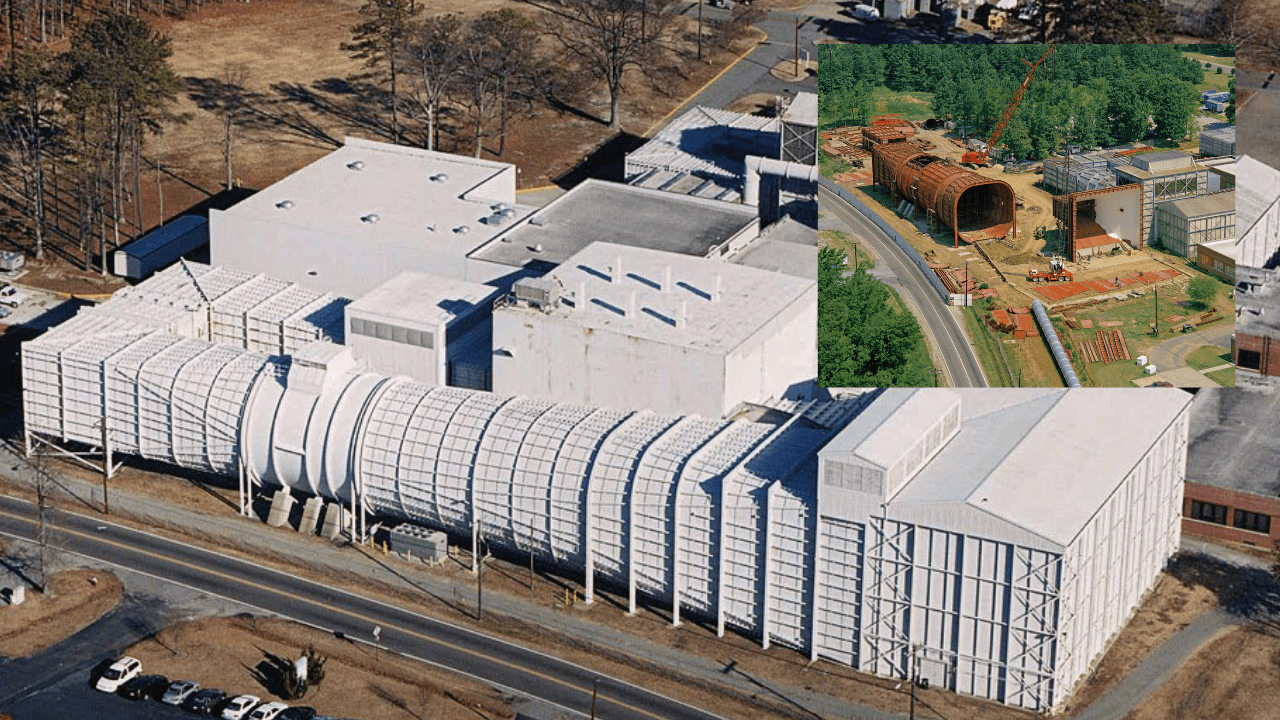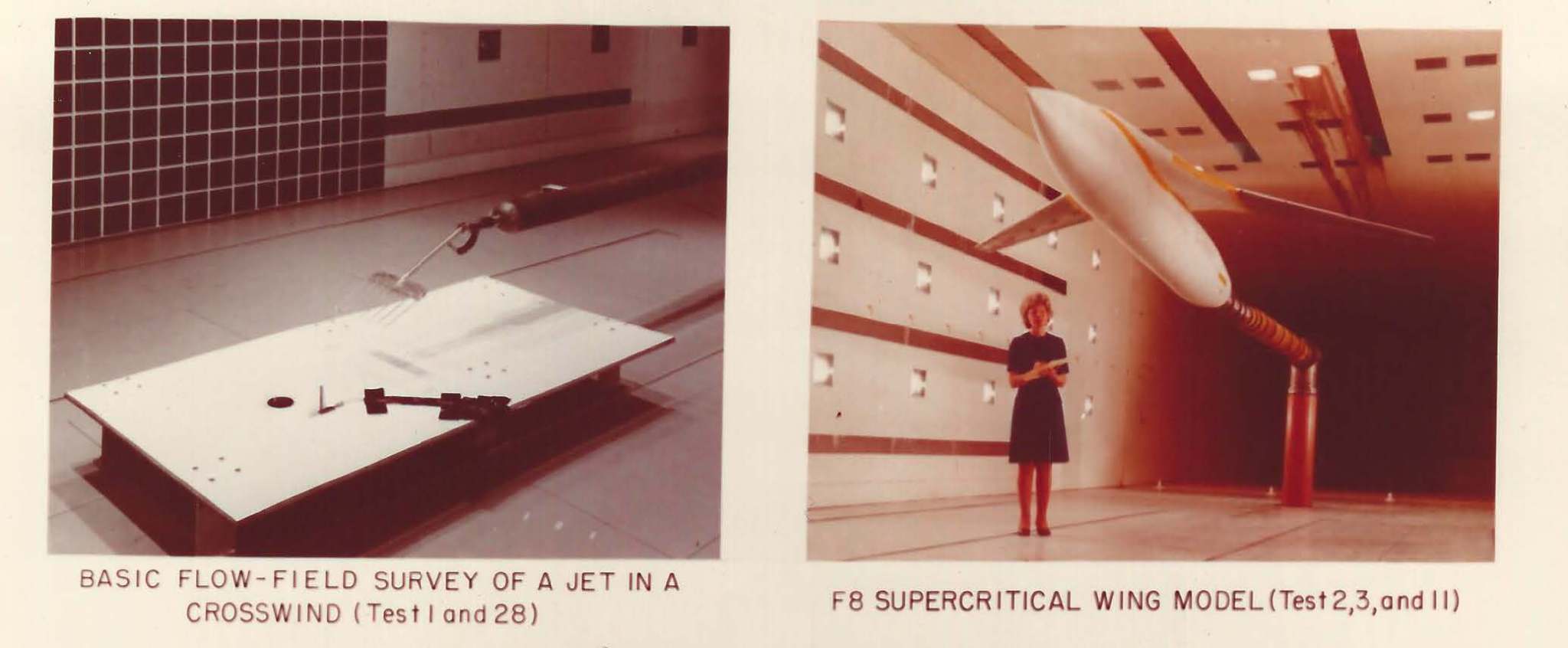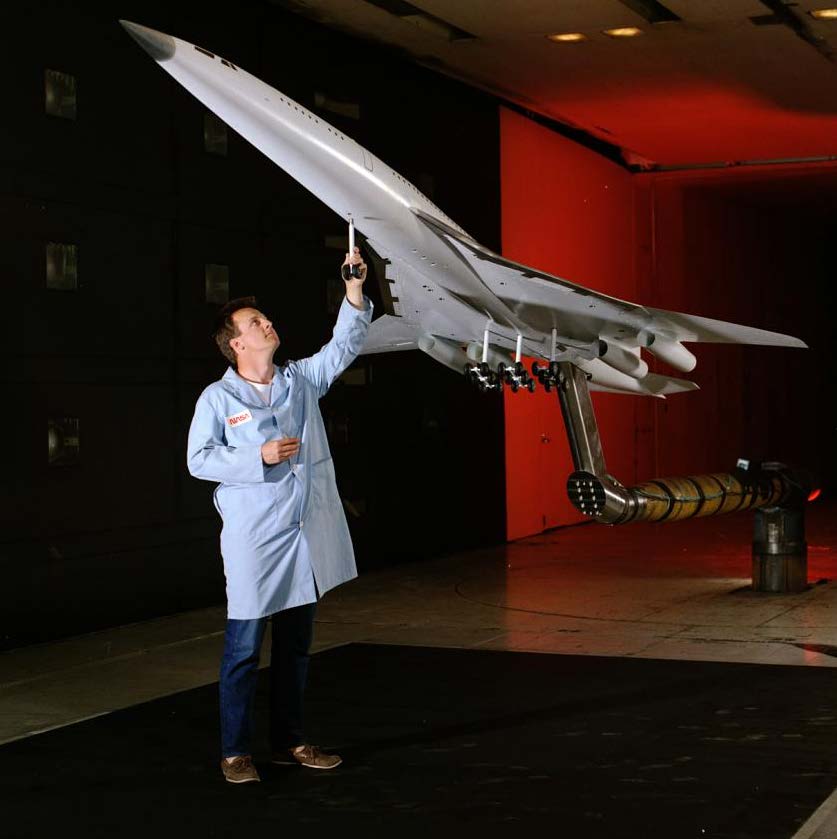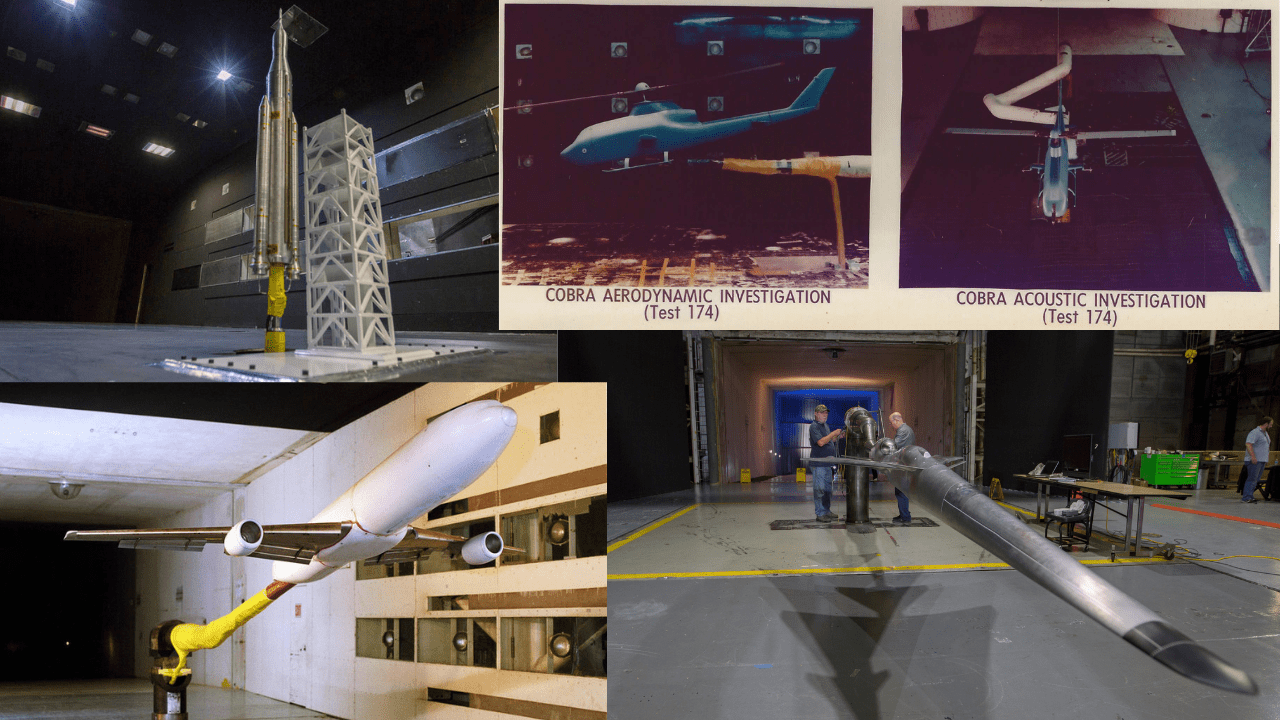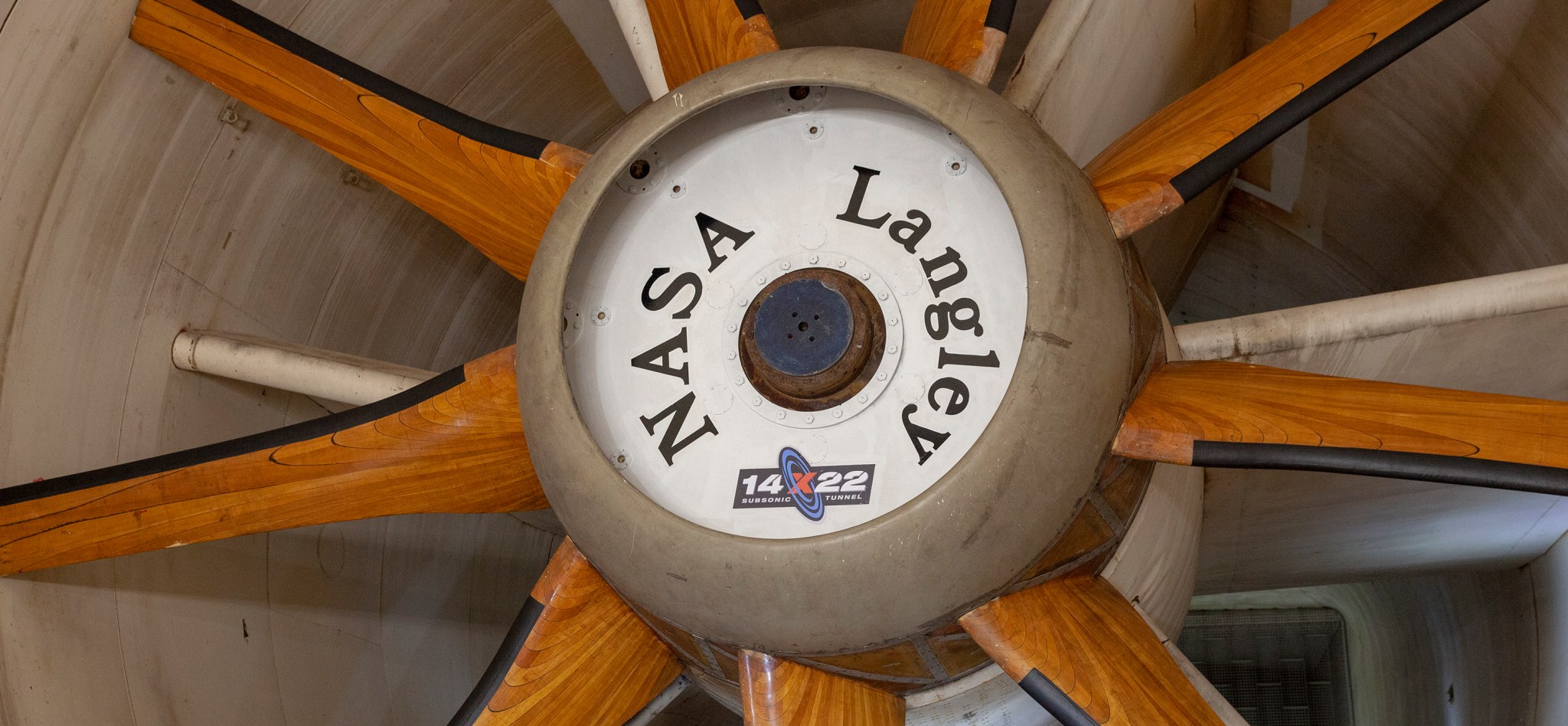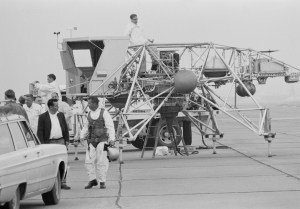Credits: NASA
In the late 1950s, airline travel was growing in demand and the desire to move from city centers or suburbs to the local airport as quickly as a jet. This was possible through helicopters, but at lower speeds than a jet. This need gave rise to an interest in vertical short takeoff and landing (V/STOL) aircraft.
V/STOL research began at NASA’s Langley Research Center in Hampton, Virginia, in the 1950s, which at the time was stilled called the National Advisory Committee for Aeronautics or NACA. Tests were conducted in large tunnels, but the unique flight of V/STOL aircraft called for a unique tunnel.
“Richard ‘Dick’ Kuhn advocated for a wind tunnel with a test section larger than 7×10, but smaller that the 30×60,” explained Frank Quinto, facility manager of Langley’s 14×22 Subsonic Wind Tunnel. “This would allow wind tunnel models to be larger, but easily handled by a couple of people. The larger test section would also minimize wall effects associated with high-wake deflection angles from V/STOL concepts.”
In addition, very good speed control was required at low speeds to investigate the entire transition range from takeoff to cruise.
After plans were approved, site preparations were made in 1968 and construction began in 1969 of the V/STOL Transition Tunnel, later to be known as the 14×22 Subsonic Wind Tunnel.
The first wind-on run occurred on December 11, 1970 with Test No. 002 – F-8 Supercritical Wing Model. The same model was tested in two more additional tests in support of Dr. Richard Whitcomb’s supercritical airfoil research.
“The second five years in the V/STOL Transition Tunnel continued the research into Vertical or Short Take Off and Landing concepts, rotorcraft, and wing tip vortices,” said Quinto. “Rotorcraft testing mainly used the General Rotor Model System to power the helicopter model rotor and were sting mounted to a unique support called the “Alpha-Beta” sting.”
Several military fighter concepts with V/STOL capabilities were also tested during this time, including the Experimental Fighter Vertical Takeoff, or XFV-12A. This concept would become well known as the “Harrier” jet.
“In 1985, the first major renovation to the facility occurred,” said Quinto. “The flow studies that occurred in the early 1980s provided the framework for the flow improvements during this renovation upgrade including a straight wall flow collector, fan diffuser grid, and four anti-turbulence screens and flow straightening honeycombs.”
In the early 1990s, there was renewed interest in civilian supersonic travel under the High Speed Civil Transport program. The 14×22 tested several versions of supersonic transport for low-speed aerodynamics.
In the mid-1990s, several situations occurred that increased the testing demand for the 14×22. The Joint Strike Fighter (JSF) Program had two competing companies: Lockheed-Martin and Boeing.
“Both companies were proposing several tests to get data on all 3 variants or versions,” said Quinto. “The Air Force needed conventional landing, Marines required V/STOL, and the Navy looked into carrier takeoff and landing.”
The majority of the testing in NASA’s 14×22 tunnel would concentrate on the Marine variant for V/STOL performance. Their tests supporting JSF, along with continued research on the High Speed Research program, would double the regular year of tests.
“In 2009, the Environmentally Responsible Aviation project was created to determine methods and technology to reduce aircraft noise, fuel burn, and emissions,” said Quinto. “The 14×22 was one of the principal facilities to determine ways to reduce aircraft noise. In order to properly investigate aircraft noise, the facility would have to go through several modifications for better acoustic measurements.”
Currently, the facility supports several major NASA Aeronautics programs to obtain low-speed aerodynamics and takeoff and landing performance of concepts such as the X-59 Quiet SuperSonic Technology and the Transonic Truss Braced Wing.
“For 50 years, the 14x 22-Foot Subsonic Wind Tunnel has played a key role in the advancement of flight, from NASA experimental aircraft, to civilian and military helicopters and jets, to supersonic passenger aircraft, and spacecraft,” said Clayton Turner, director of NASA’s Langley Research Center. “The facility’s unique test area and its talented workforce have helped a wide range of clients including aircraft manufacturers, defense industry partners and other government organizations.”
Today, the tunnel remains a vital asset that plays a key role in the testing of future concepts, such as improving passenger flight efficiency by reducing emissions and fuel consumption, and advancing the emerging world of urban flight through Unmanned Aircraft Systems and electric aircraft.
David Meade
NASA Langley Research Center





























